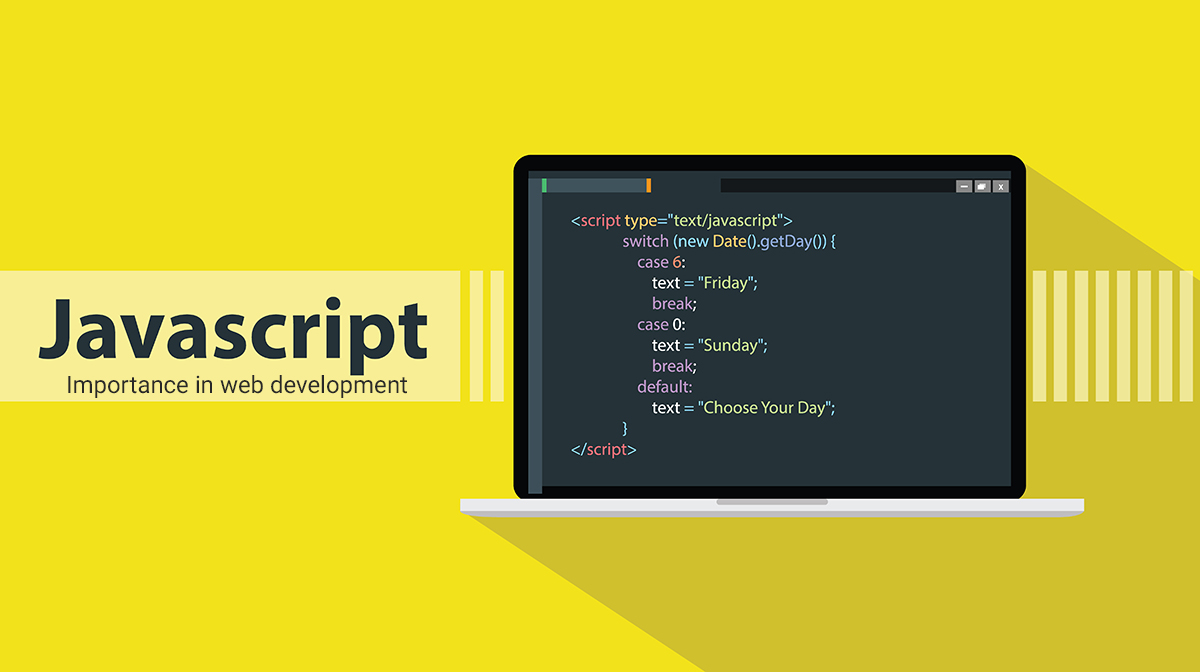JavaScript has long been considered the backbone of web development. Whether you’re browsing a website, interacting with a web application, or engaging with dynamic content, there’s a good chance that JavaScript is behind the scenes, making everything tick. But what makes this programming language so vital for modern web development? In this article, we’ll explore the core role of JavaScript, its features, and how it continues to shape the web.
What is JavaScript?
JavaScript is a high-level, dynamic programming language that was originally created for client-side web development. It enables developers to create interactive elements on a webpage such as dynamic forms, animations, and live content updates. Over time, its use has expanded to both the client and server side, making it one of the most versatile and widely used programming languages today.
In the context of web development, JavaScript runs in the browser and allows websites to respond to user actions without requiring a page reload. From simple interactive elements like buttons to complex real-time applications, JavaScript is central to creating a seamless web experience.
The Core Features of JavaScript
Let’s break down some of the essential features of JavaScript that contribute to its popularity and power in modern web development.
- Interactivity and Dynamic Content:
JavaScript can manipulate HTML and CSS directly, allowing developers to update the content and style of a webpage without needing to reload it. This makes it an essential tool for creating dynamic, interactive user experiences. For example, think about a form that automatically checks if a user’s email is valid as they type—this real-time validation is powered by JavaScript. - Event Handling:
One of JavaScript’s most powerful features is event handling. An event is an action or occurrence that can be triggered by the user or the browser (like clicking a button, scrolling a page, or pressing a key). JavaScript allows developers to “listen” for these events and execute specific code in response. This is the foundation of creating interactive websites and applications. - Asynchronous Programming (AJAX):
Asynchronous JavaScript and XML (AJAX) is a technique that allows web pages to send and receive data from a server asynchronously (without refreshing the page). This means that parts of a webpage can be updated independently, improving user experience. For instance, when you like a post on Facebook and the like count updates without reloading the entire page, that’s AJAX in action. - JavaScript Frameworks and Libraries:
To streamline development and improve efficiency, developers often use JavaScript frameworks and libraries. These provide pre-written, reusable code for common functionalities and structures. Some of the most popular include:- React: A JavaScript library for building user interfaces, particularly single-page applications.
- Angular: A full-fledged framework for building large-scale web applications.
- Vue.js: A progressive JavaScript framework that is easy to integrate into projects.
- jQuery: Though less commonly used today, jQuery was once the go-to library for simplifying DOM manipulation and handling cross-browser inconsistencies.
- Cross-Browser Compatibility:
One challenge in web development is ensuring that your site works across all web browsers. JavaScript has evolved to address this challenge, with tools and frameworks helping to ensure that code functions consistently across different platforms, whether users are on Chrome, Firefox, Safari, or Edge.
The Role of JavaScript in Modern Web Development
Today, JavaScript is no longer limited to the client-side; it has become a full-stack language, powering both the front-end (what users see) and the back-end (server-side functionality) of web applications. This evolution has been driven by the rise of frameworks like Node.js, which allows JavaScript to run on the server.
Let’s take a look at how JavaScript impacts different areas of modern web development:
- Frontend Development:
On the front end, JavaScript is used to handle user interactions, update content dynamically, and create sophisticated user interfaces. With libraries and frameworks like React, Vue, and Angular, developers can build complex, data-driven web applications that feel fast and responsive, even as they scale.
JavaScript also supports the development of Single Page Applications (SPAs), which load a single HTML page and update dynamically as the user interacts with the app. This results in a smoother experience, as SPAs don’t require full page reloads. - Backend Development:
With the advent of Node.js, JavaScript moved beyond the browser and onto the server. Node.js enables developers to write server-side code using JavaScript, streamlining development by allowing them to use the same language for both the client and server. It’s especially popular for building scalable, real-time applications like chat services, streaming platforms, and online games. - Web APIs:
Modern web browsers expose a wide variety of APIs (Application Programming Interfaces) that developers can use to add functionality to their websites. These APIs cover everything from working with media (audio, video) and geolocation to handling notifications, offline storage, and more. JavaScript is the bridge that allows developers to interact with these APIs and integrate them into their applications. - Frameworks and Development Ecosystem:
The JavaScript ecosystem has exploded with tools, frameworks, and libraries that empower developers to create rich web applications quickly. Whether it’s using React to build UIs, Express.js to create a backend with Node.js, or Next.js for server-side rendering, there’s a tool for nearly every need in the development process.
Why JavaScript Continues to Dominate Web Development?
- Ubiquity:
JavaScript is supported by all modern browsers, meaning that it runs on virtually every device and platform. No other language has this level of universal compatibility. - Huge Developer Community:
JavaScript boasts one of the largest and most active developer communities. This means constant updates, improvements, and access to a wealth of libraries, tutorials, and tools. - Evolving Ecosystem:
As the web continues to evolve, so does JavaScript. New features (like ES6 and beyond) and new tools are consistently being introduced, ensuring that developers have the latest and greatest technology at their disposal. - Versatility:
JavaScript can be used for everything from simple interactive elements to complex, real-time applications, both on the front-end and the back-end. Its versatility makes it indispensable for full-stack web development.
Conclusion
JavaScript’s power lies in its ability to build interactive, dynamic, and real-time web applications that meet the needs of modern users. Whether you’re building a simple website or a complex, data-driven web app, JavaScript is an essential tool in every web developer’s toolkit. As the web continues to evolve, JavaScript will remain at the heart of web development, enabling developers to create innovative, engaging, and responsive experiences for users around the world.

